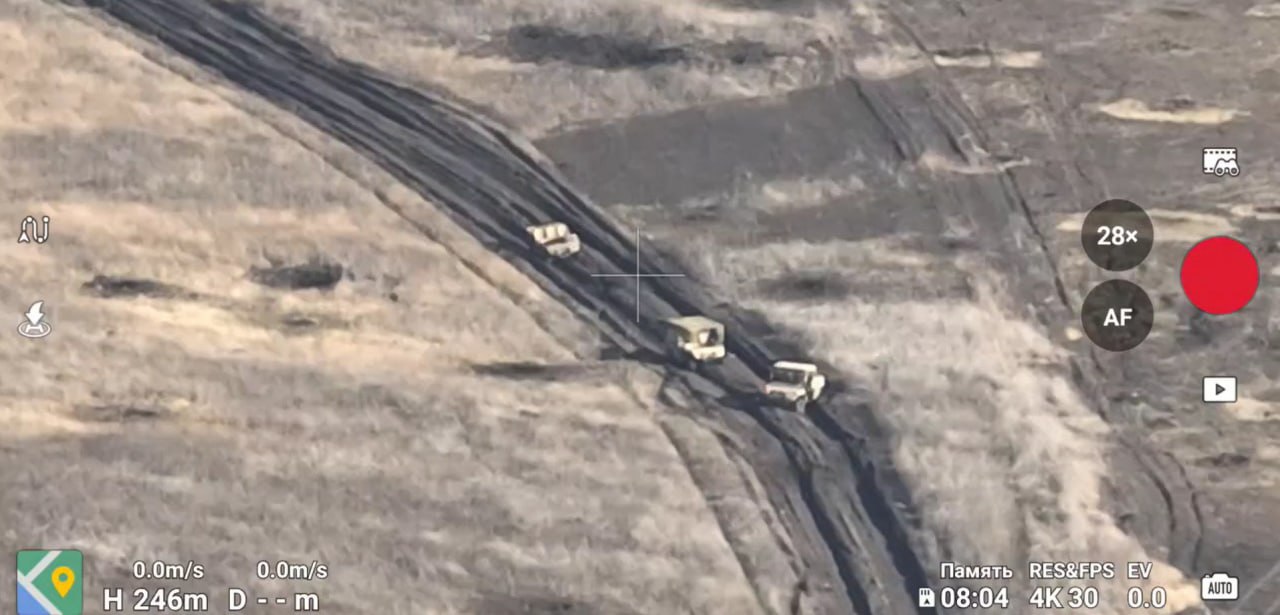Russia Unleashes Chinese ATVs To Fight Ukraine That Were Personally ‘Inspected & Approved’ By Putin

The Russian military increasingly relies on light vehicles, such as off-road motorbikes and ATVs, to carry out essential operations on the frontline, especially under the cover of darkness, according to the latest intelligence update by the British Defense Ministry.
On May 13, the Ministry disclosed that lighter, faster, all-terrain vehicles (ATVs) have become a staple in Russian tactics since the beginning of this year, targeting Ukrainian positions, ferrying personnel to the frontlines, and executing reconnaissance missions.
“Since the start of 2024, Russia has highly likely increased its use of light vehicles, such as all-terrain vehicles and off-road motorbikes, to transport personnel to the frontlines and conduct attacks on Ukrainian positions, particularly at night,” stated the UK defense ministry.
According to UK intelligence, Russia has purportedly acquired 2,100 Chinese off-road vehicles known as Desertcross 1000-3, with some personally inspected by President Vladimir Putin in November last year.
The Desertcross 1000-3 ATV, sourced from China, is specifically engineered for patrol and reconnaissance missions, raid operations, search and rescue missions, and transporting materials across challenging terrain conditions.
With a curb weight of 1050 kg, the vehicle can carry a load of up to 550 kg on its pickup bed and can tow an additional trailer weighing 300 kg. UK intelligence further elucidated that the Russian military has intensified its utilization of these nimble and rapid vehicles for reconnaissance of Ukrainian positions.
The intelligence suggests that the findings from these reconnaissance missions are utilized to target Ukrainian positions with artillery, First-Person View (FPV) drones, or other attack drones.
Get AfriPrime Android Web View app....Click the link to Amazon app store to download https://rb.gy/3xek46
However, despite their enhanced mobility, these vehicles are susceptible to attacks from various weapons, including Ukrainian FPVs, caution UK intelligence sources.
Defense expert Vijainder K Thakur, in his article for the EurAsian Times, pointed out, “Russia is averse to importing military hardware from abroad, but since the start of its Special Military Operation (SMO) in Ukraine, and the consequent sanctions imposed on it by the West, it has shown flexibility.”

“The import of Shahid 131 kamikaze drone was a case in point. It’s evident that President Putin himself cleared the import of the Chinese vehicle, and for that to happen, there must have been some very good reasons. The President didn’t visit Rostov-on-don as a motorsport enthusiast!” he added.
Russia’s Shift Towards Light Vehicles
Over the first two years of the wider war on Ukraine, Moscow has faced a serious challenge in sustaining its combat vehicle fleet.
With an estimated loss of nearly 15,000 combat vehicles, including tanks, infantry fighting vehicles, and armored personnel carriers, the strain on Russia’s military resources has become palpable.
Despite efforts to ramp up production and restore vehicles from storage, the monthly attrition rate of over 600 units has outpaced replenishment efforts.
Compounding this issue is the terrain itself. Tanks, artillery guns, and Multiple Launch Rocket Systems (MLRS) often find themselves immobilized in wet and muddy conditions, making them vulnerable targets.
In comparison, All-Terrain Vehicles (ATVs) offer a nimble alternative, capable of traversing difficult terrain with ease. Their low profile and stealthy movement make them less susceptible to detection by satellites and drones, providing a tactical advantage on the battlefield.
Recognizing the limitations of conventional armored vehicles and the advantages of mobility and stealth, Russian forces have begun embracing lighter alternatives.
More troops are now utilizing open-top golf carts and motorcycles for combat operations. These vehicles offer agility, speed, and cost-effectiveness, allowing for swift maneuvering and reconnaissance in contested areas.
Get AfriPrime Android Web View app....Click the link to Amazon app store to download https://rb.gy/3xek46
The significance of this shift extends beyond mere transportation logistics. As the conflict evolves, the battlefield is transitioning towards a more entrenched style of warfare. Trenches and fortified defensive lines are becoming increasingly prevalent as both sides seek to consolidate their positions.

Military expert Thakur explained, “Under the circumstances, the significance of ATVs cannot be overemphasized. Through quick transportation of ammunition and personnel to vulnerable positions and rapid evacuation of the wounded, they will bring stability to the units deployed along the battlefront.”
However, the reliance on unconventional vehicles also underscores a sobering reality for the Kremlin. Despite its continued battlefield prowess, Russia’s ability to replace lost armored vehicles remains constrained.
- Questions and Answers
- Opinion
- Story/Motivational/Inspiring
- Technology
- Art
- Causes
- Crafts
- Dance
- Drinks
- Film/Movie
- Fitness
- Food
- Spiele
- Gardening
- Health
- Home
- Literature
- Music
- Networking
- Other
- Party
- Religion
- Shopping
- Sports
- Theater
- Wellness
- News
- Culture
- War machines and policy

